




| White-fronted Tern (Sterna striata (Gmelin, 1789)) |





|
|
Scientific name: Sterna striata (Gmelin, 1789) Common name: White-fronted Tern French name: Sterne tara Order: Charadriiformes Family: Laridae Size: Body size: 35 to 43 cm; Weight: About 160 g; Wingspan: 79 à 82 cm. Habitat: Coastal areas, bays, estuaries, rocky islets. Food: Small fish caught diving after hovering. White-fronted Terns sometimes fish in large groups. Nesting: White-fronted Terns nest in large colonies. Nests are placed in simple depressions on the sand or directly on rocks. They are very close to each other. There are 1 or 2 eggs per clutch. Migration: Many juveniles and some adults migrate from New Zealand to Australia and Tasmania in autumn. Geographic area: New Zealand, southwest Australia, northern Tasmania. |
The White-fronted Tern has light grey upperparts and white underparts. The long tail is forked. The cap is black and the forehead is white. The bill is black and pointed. The short legs are dark reddish brown. Outside of the breeding season the cap is spotted with white. Juveniles have finely striped white and black upperparts. |
| [To know more about the White-fronted Tern] [Next picture] [Top] |
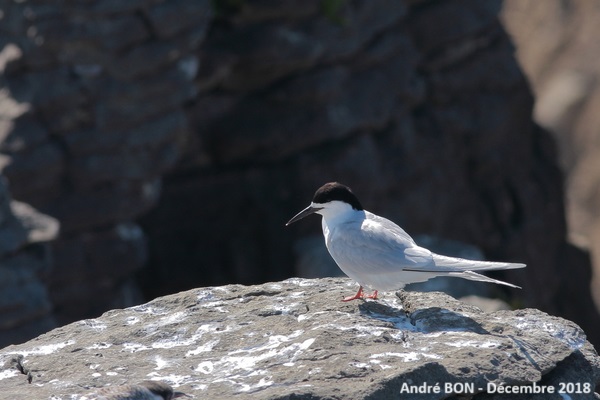
|
White-fronted Terns are observed in varied environments. We observed them here on rocks. |
| [To know more about the White-fronted Tern] [Next picture] [Previous picture] [Top] |
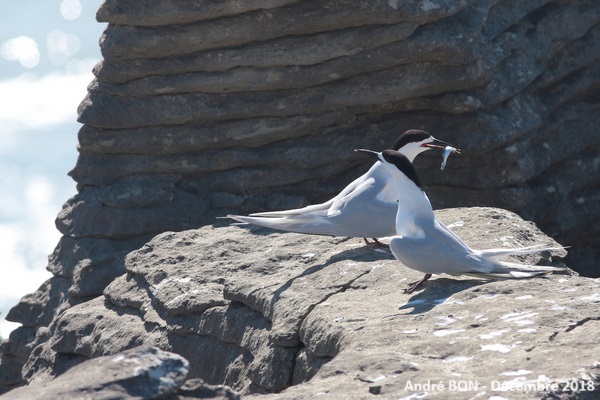
|
Here's probably a pair. It must be the male, that is slightly larger than the female, which came back from fishing. |
| [To know more about the White-fronted Tern] [Next picture] [Previous picture] [Top] |
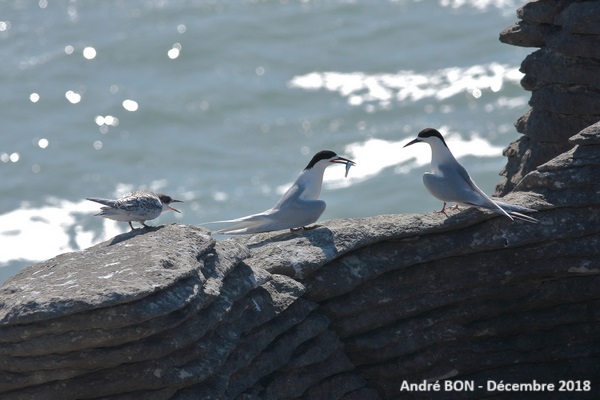
|
The fish is for the juvenile which seems to be impatiently waiting for it. |
| [To know more about the White-fronted Tern] [Next picture] [Previous picture] [Top] |
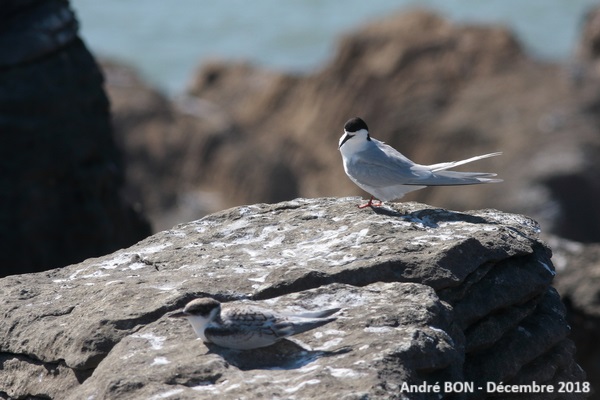
|
I think the Terns nested here on the rocks. |
| [To know more about the White-fronted Tern] [Previous picture] [Top] |
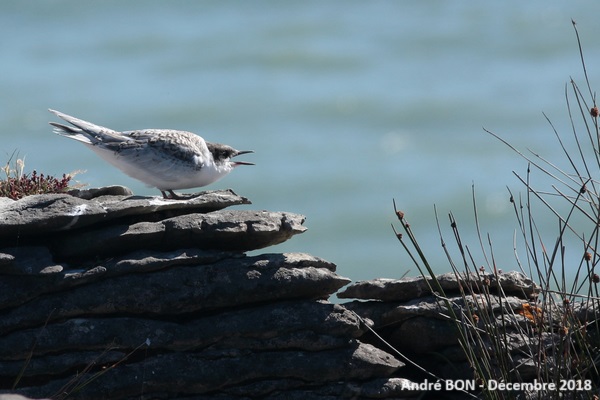
|
Juvenile. |